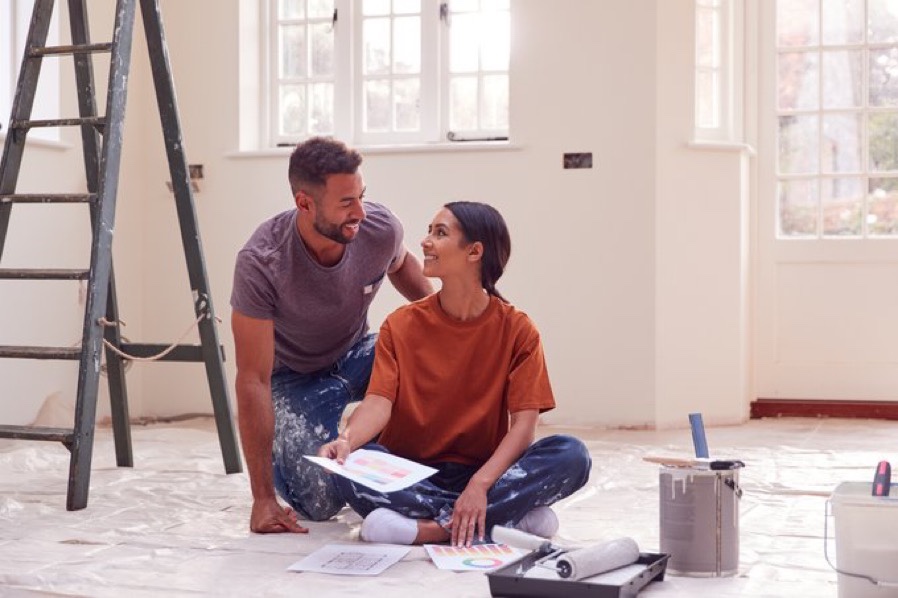The scariest DIY mistakes that homeowners make

Research by property maintenance solution provider, Help me Fix, reveals what the scariest home improvement mistakes are, based on the financial repercussions of DIY disasters within the home.
It is estimated that the average cost of making a home improvement mistake in the UK is just under £4,000. However, for Londoners, a DIY screw up results in a far more terrifying average repair bill of £5,838. In the Midlands it’s £4,453 and the cost is £4,272 in the North East. But what are the most common mistakes that people are making?
Always going for the cheapest option
When it comes to buying DIY tools, you can pay for anything from wildly expensive premium equipment to basement price budget options. While doing the former is rarely necessary, doing the latter is never a good decision. The cheapest gear is likely to break or complete the job to a poor standard which often means you have to do it all over again. Go for mid-range products when and where you can.
Lack of planning
Spur of the moment DIY is common. But lack of planning is a fast-track to DIY nightmares. If, for example, you’re hanging pictures but fail to check exactly what’s happening behind the wall you’re hanging on, you can easily end up driving a screw into a water pipe or the electrics. The result can be a disaster.
Underestimating costs
Even simple tasks tend to cost more than you first expect. When you pay a tradesperson to complete a job, they bring all of the necessary tools with them. With DIY, you have to buy the tools for yourself and specialist equipment can be pricier than you think. Make sure your tools costs don’t end up costing you more than it would to hire a professional.
Inaccurate measurements
Whether it’s wallpaper, wooden flooring, or carpet, accurate measurement is essential. If you get it wrong and cut too short, you can end up wasting a lot of expensive materials. The best thing to do is always cut too long to give yourself a buffer – you can easily trim things to fit, but you can’t extend them.
Taking too much on
It’s important to know and accept your DIY limitations. Don’t take too much on if you don’t have solid experience. You might be able to put a shelf up perfectly, but that doesn’t mean you can tile a bathroom or lay a hardwood floor. Be honest with yourself and if something feels a little bit above your skill set, get a quality tradesperson in to do the job properly. It could end up saving you buckets of cash.
Sloppy paintwork
Painting a wall should be easy, but if you don’t make the effort to properly protect surfaces, it can end up costing you a fortune. For example, painting a skirting board without laying down some kind of carpet protection can result in a stained carpet that can’t be cleaned – the price of a full carpet replacement is too much to pay for simply wanting to paint a wall.
Lazy shelf work
Putting up new shelves is, or at least should be, one of the more straightforward DIY tasks a homeowner can do. Perhaps this perceived simplicity is what leads some folks to get lazy and attempt to gauge the level of the shelf by eye rather than using a spirit level. More often than not, you’re left with a sloping shelf and ugly looking holes in the wall when you eventually straighten it.
Ettan Bazil, CEO and Founder of Help me Fix said:
“Some people take on DIY projects for fun – it’s a hobby they enjoy doing – while others do it to try and reduce costs which has become increasingly more common with the spiralling cost of living.
Either way, you’ve got to be smart and savvy if you want to avoid spending more money than you need or want to. Bad DIY often leads to unsightly flaws dotted around the house, be it a series of wonky shelves, a loose and ragged carpet, or even cracks and holes in the wall.
In many cases, this leads to the hiring of professional help to rectify these issues, costing you far more than you may have anticipated.
Don’t overstretch yourself, don’t rush, and don’t forget to do research and planning. If there’s even the smallest chance you could end up costing yourself an arm and leg, get the professionals in.”






